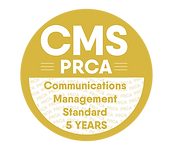Local wellbeing in Northern Ireland
05 January 2018 - by Gráinne WalshHow is wellbeing assimilating into Northern Ireland?
Earlier this year, my Stratagem colleagues and I were asked by the Carnegie UK Trust to review the wellbeing landscape in Northern Ireland, just over two years after the Carnegie Roundtable on Measuring Wellbeing in Northern Ireland launched its report 'Towards a Wellbeing Framework'.
What did we find? Despite political gridlock, wellbeing has made its mark on Northern Ireland.
The Roundtable’s seven steps for developing a wellbeing framework and ten recommendations to introduce a new, innovative way of delivering public services has influenced central government. There remains a strong commitment to the outcomes-based approach at leadership level, with acting Head of the Civil Service David Sterling, the other permanent secretaries and senior responsible owners working on detail.
However, given the current political deadlock, combined with a new era for local government in the form of community planning, our study focused on the 11 councils: how they have been influenced by the discourse and have, to varying degrees, adopted both the language, and substance, of the wellbeing agenda and outcome-based model. It has provided a very popular headline vision, sometimes sensitively adapted to local need and integrated to pre-existing plans and programmes.
In April 2015, the reform of local government resulted in modest new powers and a reduction in the number of councils from 26 to 11. The new councils were given the responsibility of leading the community planning process for their citizens.
In theory, 'community planning brings together all those involved in delivering public services in collaboration to improve the wellbeing of everyone – making a real difference to people’s lives.' Community Planning Partnerships were established in each district comprising the council, statutory bodies, public agencies and the wider community, including the community and voluntary sector.
The community planning process has improved the connection between all tiers of government – local and regional – through these formal partnerships as the partners developed a shared plan.
It has also enhanced the connection with the third sector and wider communities through the development and consultation phase of the process, which was intended to produce agreed actions jointly and deliver better outcomes for everyone.
All 11 community plans identify long-term priorities for improving the social, economic and environmental wellbeing of districts and the people who live there, using phrases such as 'the wellbeing of an area,' 'community cohesion' and 'improving the quality of life for all citizens'.
Local strategic planning reflected and complemented the Programme for Government outcomes and the associated delivery plans, priming local government and its partners to play a key role in the delivery of the new look Programme for Government.
Nevertheless, much needs to be done. How do we advance the values and knowledge base around wellbeing and outcome-based approaches? Through information-sharing, thought-leadership, capacity-building support to local councils, sign-posting to expertise in consultation and engagement, and new techniques in deliberative democracy – all areas readily embraced by An Enabling State.
This article was first published on carnegieuktrust.org.uk








